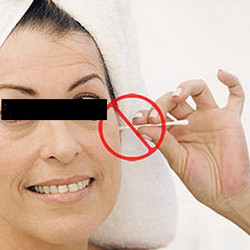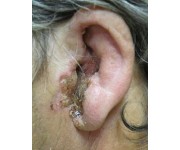Pain is no fun. It’s always a good time to discuss topics related to your goals of eating less, eating healthier and exercising more. Let’s start with a condition especially associated with eating large meals—gallstones.
To know them is to hate them. If you’re 40ish and in most instances overweight and/or obese, you may have been told you have gallstones. Many of you reading this will have already had your gallbladders removed; some are scheduled to do so. Today’s topic is one that points out how a little maintenance can go a long way in preventing a lot of trouble.
To understand the topic, I’ll provide some basic medical information.

- The gallbladder is part of the digestive system, specifically the biliary tract. The biliary tract produces enzymes and the bile in the liver that helps the small intestine digest food. The gallbladder is where the bile gets stored. It releases bile when you eat.
- Gallstones are hard particles that develop in the gallbladder as a result of an imbalance in these enzymes, such as occurs when bile contains too much cholesterol.
Your risk for gallstones increases if you’re in the following (independent) risk classes:
- Female: Estrogen may increase cholesterol levels in bile. It may also decrease the contractions of the gallbladder that expels the juices from it. That stagnation produces an environment in which gallstones may form.
- Obesity and a bad diet: Obesity increases the amount of cholesterol in bile, promoting stone formation. A bad diet (i.e., high in calories/carbohydrates and low in fiber) also increases the presence of gallstones.
- Over 40 years old
- Family history of gallstones
- Mexican American
- Native Americans have the highest rate of gallstones in the U.S., with almost 65% of women and 30% of men having them. They have genetic factors that increase the amount of cholesterol in their bile.
- Rapid weight loss: Those of you on extremely low-calorie diets and having bariatric surgery increase your risks. As the body breaks down fat during fasting, the liver secretes increased levels of cholesterol into bile.
The symptoms of gallstones (a “gallbladder attack”) are pretty typically pain, nausea and vomiting, although many people with gallstones go without symptoms for a long time. Gallstones become especially problematic when they block the tubes (bile ducts) that transport the “digestive juices,” either through size or location. These attacks usually occur in the right upper portion of the abdomen (right below the chest and liver), which is where the gallbladder is located. Attacks tend to occur after a heavy meal, and they usually produces symptoms in the evening or late into the night.
See your physician ASAP if you develop any of the following symptoms:
- Abdominal pain in the right upper portion of your abdomen that lasts more than four hours
- Nausea and vomiting
- Fever with abdominal pain
- Jaundice (a yellowish coloration of the skin and/or the whites of your eyes)
- Changes in the color of your stools (lightening) or urine (assume a tea-like color)
After diagnosis, treatment typically involves pain management and prevention of excessive fluid losses and dehydration. Surgery to remove the gallbladder due to excessive stones or symptoms is one of the most common adult operations in the U.S. Patients normally do fine after gallbladder removal, as the digestive tract can redirect the flow of bile and other digestive enzymes. Those that cannot undergo surgery have different treatment options, involving dissolving gallstones.
In summary, if this topic was particularly unappetizing, remember that in most cases, the risk and rate of formation of gallstones can be reduced by a high fiber, lower calorie diet, measured weight loss and exercise. Use this information to your advantage as you pursue those New Year’s resolutions!
Feel free to ask your SMA expert consultant any questions you may have on this topic.
Take the #72HoursChallenge, and join the community. As a thank you for being a valued subscriber to Straight, No Chaser, we’d like to offer you a complimentary 30-day membership at www.72hourslife.com. Just use the code #NoChaser, and yes, it’s ok if you share!
Order your copy of Dr. Sterling’s new books There are 72 Hours in a Day: Using Efficiency to Better Enjoy Every Part of Your Life and The 72 Hours in a Day Workbook: The Journey to The 72 Hours Life in 72 Days at Amazon or at www.72hourslife.com. Receive introductory pricing with orders!
Thanks for liking and following Straight, No Chaser! This public service provides a sample of what http://www.SterlingMedicalAdvice.com (SMA) and 844-SMA-TALK offers. Please share our page with your friends on WordPress, like us on Facebook @ SterlingMedicalAdvice.com and follow us on Twitter at @asksterlingmd.
Copyright © 2018 · Sterling Initiatives, LLC · Powered by WordPress





 3. The victim should be removed from the water at the earliest opportunity. Forego inclination to perform chest compressions or rescue breathing in the water.
3. The victim should be removed from the water at the earliest opportunity. Forego inclination to perform chest compressions or rescue breathing in the water.





 Each of us has elderly family members for whom we may be concerned about their memory or other possible signs of dementia. You don’t have to stand by powerless and let them dwindle away. Early detection of dementia gives the best …
Each of us has elderly family members for whom we may be concerned about their memory or other possible signs of dementia. You don’t have to stand by powerless and let them dwindle away. Early detection of dementia gives the best …  Are you the type that has a bad memory? Is your memory good when you “want it to be?” Do you just have problems paying attention? Are you concerned about elderly family members suffering from dementia or Alzheimer’s disease? This Straight, …
Are you the type that has a bad memory? Is your memory good when you “want it to be?” Do you just have problems paying attention? Are you concerned about elderly family members suffering from dementia or Alzheimer’s disease? This Straight, …